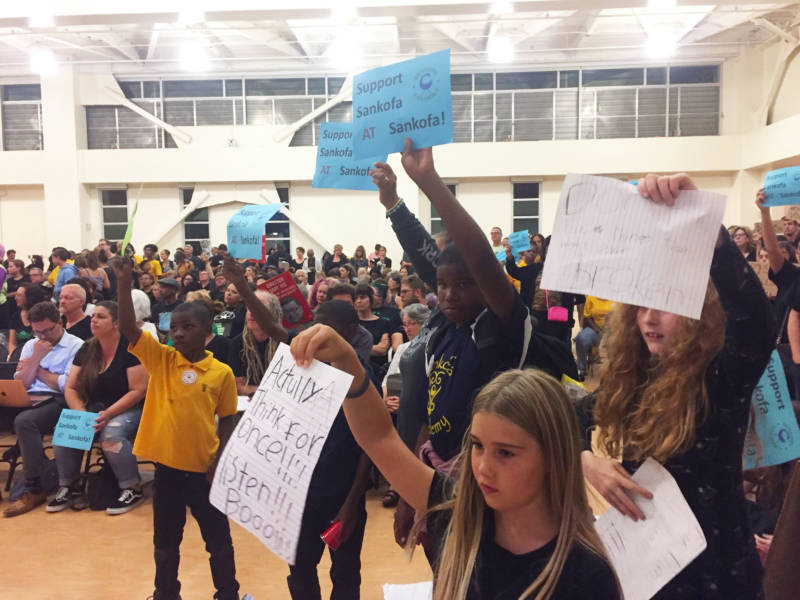In an effort to appease the many angry attendees at the meeting, Superintendent Kyla Johnson-Trammell said that each of the merged and expanded schools in this round of closures would get priority funding in the district’s 2020-21 budget to ensure they have the support they need to succeed.
“We will talk about what our priorities are,” she said. “We will need to think about the investments we need to make for the next school year.”
Johnson-Trammell, who backs the mergers, noted the weight of the decision, acknowledging that the district is expecting to lose students who may not want to stay after their schools have closed. But she also said this created an opportunity to build stronger merged schools that may actually attract new students moving into those neighborhoods.
The move follows the board’s recent approval of its Blueprint for Quality Schools plan to restructure the district and close up to 24 of its roughly 80 schools, many of which are under-enrolled and struggling academically.
In the first round of closures and mergers last year, which included the controversial shuttering of Roots International Academy, the district admitted it did not provide enough support to staff during the process. This time around, the district said, it has allotted $300,000 to help those school communities with the transition.
“Closing schools is not the answer to addressing those inequities,” Keith Brown, president of the Oakland Education Association, told the board. “It’s fully funding our schools.”
The proposal to close Kaiser and merge it with Sankofa has proved particularly controversial and racially fraught.
Kaiser is a diverse school in the more affluent hills with a sizable white population and strong parent involvement. Its excellent academic reputation draws students from largely middle-class families throughout North Oakland. Sankofa, on the other hand, has long struggled academically, with declining enrollment and a largely low-income, African American student body.
The months-long debate over their merger has involved heated exchanges about race and equity in Oakland, with some opponents accusing the district of pitting the two communities against each other.
Multiple parents and teachers from Kaiser gave emotional appeals before the board, pointing to the school as a shining model of success in a district with a less-than-stellar record. They implored the board to instead consider expanding the campus and bringing other schools into it.
“I think there’s a way to do this so we could be successful, but we don’t have buy-in to do this,” said Gonzales, who voted against the merger. “Without buy-in from teachers, and very little buy-in from parents, I don’t think it’s going to work and I think it’s a little irresponsible.”

